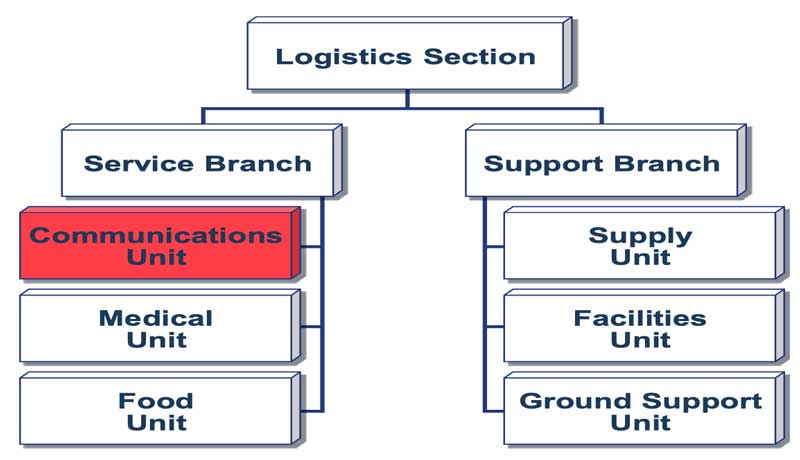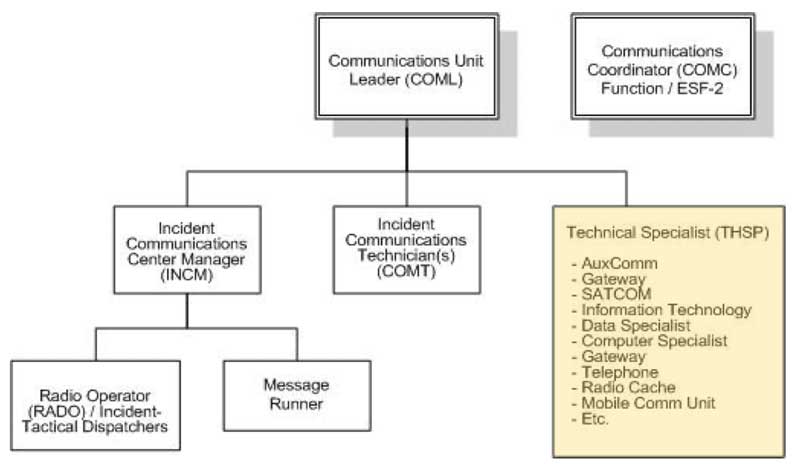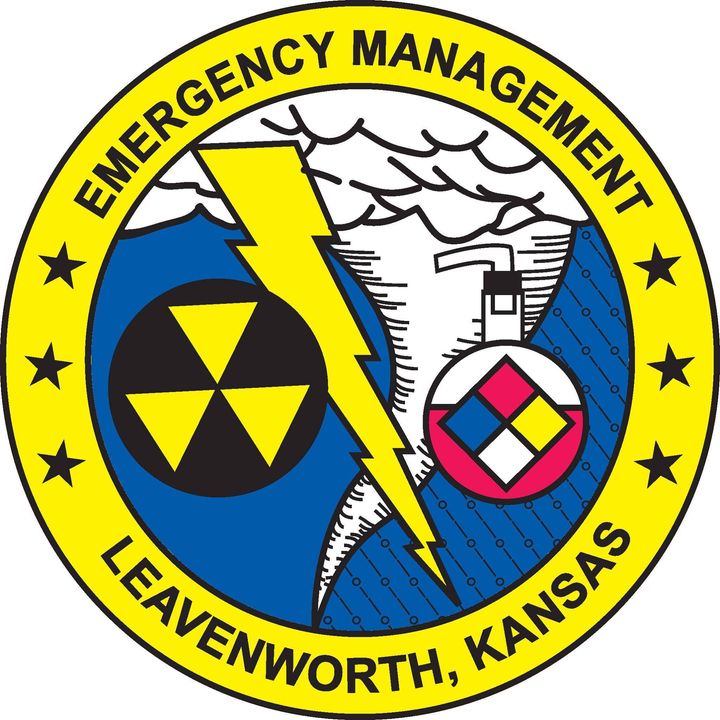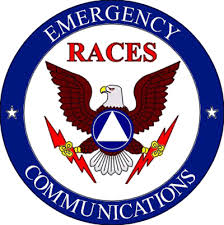KS-LV-ARES Philosophy
To provide the greatest potential utility to the most possible served agencies, we will train, exercise, and utilize the National Incident Management System (NIMS). As this system has the greatest adoption and provides for the greatest interoperability, it will be the best use of our most precious resource: Time. If it does not follow the Incident Command System (ICS) structure, we will not be doing it under ARES®.
Until further notice, our net time, online resources, and training efforts will be geared toward supporting the Communications Unit Leader (COML) in the Communications Unit.
For every Incident, there is an Incident Commander (IC). You’ll see that position at the top of the food chain.

The Communications Unit falls under the Logistics Section.

The Communications Unit (COMU) is headed by the Communications Unit Leader (COML). In very small Incidents, such as Weather Spotting for LvCo, the IC is also the COMU.

Auxiliary Communications (AUXCOMM) reports to the COML. As Radio Amateurs, we can function as Technical Specialists (THSP) with specific skills in Amateur Radio. Because you are a licensed Radio Amateur does not mean you are a qualified THSP. It means you have the minimum attributes to start training. Note: A Radio Operator (RADO) is NOT an Amateur Radio function.

Our primary supported agency is the Leavenworth County Office of Emergency Management. If this office is involved in emergency response, they have top priority for the allocation of Amateur Radio Emergency Services as a resource. Although many radio amateurs have been provided 800 MHz hand-helds on the trunked-county radio system to perform other duties as needed (such as weather spotting), the distinct ARES® group is maintained as a trained cadre able to perform the wide array of AUXCOMM functions in an ICS-structured event. That means, we must learn , exercise, and prove proficiency in the many needed AUXCOMM skills we may be called upon to fulfill.

Kansas City Hospital Emergency Amateur Radio Team (KCHEART) has established a coordinated credentialing system that meets the requirements of most KC-area Emergency Management directors for identification of capability levels of Radio Amateurs to function as Technical Specialists (THSP) in the Incident Command System (ICS). We will adopt this as our training regimen until something better is found.
TRAINING TARGET: See the Credentialing Guidelines sheet.
Radio Operator III – All KS-LV-ARES members should aspire to the Radio Operator III level as a minimum.
Radio Operator II. Assistant Emergency Coordinators should aspire to the Radio Operator II level.
Radio Operator I. The Emergency Coordinator and a deputy should aspire to Radio Operator I.

Radio Amateur Civil Emergency Service (RACES), designated by local, county and state jurisdictions, when activated, are the only Amateur Radio operators authorized to transmit during declared emergencies, such as when the President of the United States specifically invokes the War Powers Act. To promote continuity and simplicity, ARES members will also be enrolled as Leavenworth County RACES members. If an emergency reaches to a level requiring a Civil Emergency declaration, ARES members simply “swap hats” and continue to perform their mission.
RACES is an FCC-authorized radio service – not an organization. See Part 97.407 of the FCC Rules.
